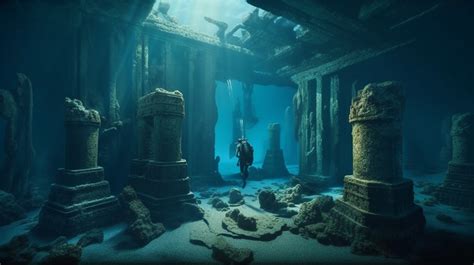
An elusive creature, the Voeltzkow’s chameleon, long thought extinct, has resurfaced in northwestern Madagascar after more than a century, stunning scientists and reigniting hopes for the conservation of this enigmatic reptile.
Scientists have confirmed the rediscovery of the Voeltzkow’s chameleon ( Furcifer voeltzkowi) in Madagascar, more than 100 years after the last confirmed sighting. The findings, detailed in a recent study, validate the existence of this rare reptile and provide critical insights for its protection.
The Voeltzkow’s chameleon, a species endemic to Madagascar, was previously known only from a few historical specimens, leading many to believe it was extinct. The lack of sightings and comprehensive surveys in its presumed habitat contributed to its “lost” status, placing it among the world’s most sought-after “lost” species.
The recent expedition, led by a team of researchers from the Bavarian Natural History Collections in Munich, Germany, ventured into the remote and challenging landscapes of northwestern Madagascar, specifically targeting areas where the chameleon had been historically documented. The team employed a combination of traditional ecological knowledge from local communities and advanced survey techniques to maximize their chances of locating the elusive reptile.
“The rediscovery of Voeltzkow’s chameleon is an incredible testament to the resilience of nature and the importance of conservation efforts, even when faced with seemingly insurmountable odds,” said Dr. Frank Glaw, a herpetologist involved in the expedition.
The team’s efforts paid off when they encountered several Voeltzkow’s chameleons, confirming the species’ continued existence. Notably, the team discovered both male and female specimens, providing crucial opportunities to study the species’ morphology, behavior, and genetics. The discovery of females was particularly significant because they had never been scientifically documented before. The females, according to researchers, exhibited striking color changes during breeding season, a characteristic that further distinguishes them within the chameleon family.
Genetic analysis of the rediscovered chameleons confirmed their identity as Voeltzkow’s chameleons, solidifying the findings and dispelling any doubts about the species’ survival. The genetic data also provided valuable insights into the evolutionary history and relationships of the Voeltzkow’s chameleon within the Furcifer genus.
The rediscovery of the Voeltzkow’s chameleon highlights the importance of continued biodiversity research and conservation efforts, particularly in biodiversity hotspots like Madagascar, which is home to a high number of endemic species. Madagascar faces significant environmental challenges, including deforestation, habitat loss, and climate change, which threaten the survival of its unique flora and fauna.
“This rediscovery underscores the urgent need for increased conservation efforts in Madagascar to protect its extraordinary biodiversity,” said Dr. Miguel Vences, another member of the research team. “By preserving their natural habitats and mitigating threats, we can ensure that species like the Voeltzkow’s chameleon continue to thrive for generations to come.”
The researchers emphasize that further studies are needed to understand the population size, distribution, and ecological requirements of the Voeltzkow’s chameleon. This information is crucial for developing effective conservation strategies to protect the species and its habitat.
The team plans to conduct additional surveys and monitoring programs to assess the chameleon’s population status and identify key areas for conservation. They also aim to work closely with local communities to promote sustainable land management practices and reduce threats to the chameleon’s habitat.
The rediscovery of the Voeltzkow’s chameleon serves as a beacon of hope for conservationists and a reminder that even species thought to be extinct can still be found with dedicated research and conservation efforts. It also reinforces the importance of protecting Madagascar’s unique biodiversity for future generations.
The Voeltzkow’s chameleon belongs to the Furcifer genus, which is comprised of numerous chameleon species found only in Madagascar. Chameleons are renowned for their remarkable ability to change color, a trait used for camouflage, communication, and thermoregulation. The Voeltzkow’s chameleon is a relatively small species, with males reaching a length of approximately 15 centimeters. Its cryptic coloration and arboreal lifestyle likely contributed to its elusiveness and the difficulty in locating it in the wild.
The rediscovery of the Voeltzkow’s chameleon comes after a century of no confirmed sightings. The original specimens, collected in the late 19th and early 20th centuries, provided limited information about the species’ ecology and behavior. The new findings offer an unprecedented opportunity to study the chameleon in its natural habitat and gain valuable insights into its life history.
The conservation status of the Voeltzkow’s chameleon is currently being assessed by the International Union for Conservation of Nature (IUCN). The rediscovery of the species will likely lead to its reassessment and potentially a listing as Critically Endangered, highlighting the urgent need for conservation action.
The successful rediscovery of the Voeltzkow’s chameleon is a collaborative effort involving scientists, conservationists, and local communities. It demonstrates the power of partnerships in achieving conservation goals and underscores the importance of integrating local knowledge into scientific research.
The rediscovery also emphasizes the importance of museum collections in biodiversity research. The historical specimens of the Voeltzkow’s chameleon, housed in natural history museums, provided valuable reference material for identifying the rediscovered specimens and confirming their identity.
The rediscovery of the Voeltzkow’s chameleon is a significant event in the field of herpetology and a testament to the ongoing efforts to document and protect the world’s biodiversity. It serves as a reminder that there is still much to be discovered and learned about the natural world and that even seemingly lost species can be found with persistence and dedication.
The rediscovery of the Voeltzkow’s chameleon also underscores the importance of funding for biodiversity research and conservation. Continued investment in these areas is essential for understanding and protecting the planet’s unique and threatened species.
The team is planning further expeditions to Madagascar to study the Voeltzkow’s chameleon in more detail and to assess the threats it faces. They are also working with local communities to develop sustainable land management practices that will benefit both the chameleon and the people who share its habitat.
The Voeltzkow’s chameleon is a symbol of hope for conservation in Madagascar and a reminder that even in the face of significant environmental challenges, it is still possible to find and protect species that were once thought to be lost forever. The rediscovery of this remarkable reptile is a cause for celebration and a call to action to protect the planet’s precious biodiversity.
Expanded Context and Background Information
Madagascar, an island nation off the southeastern coast of Africa, is renowned for its exceptional biodiversity. Separated from the African continent for millions of years, Madagascar has evolved a unique array of plant and animal life, with a high proportion of species found nowhere else on Earth. This remarkable biodiversity makes Madagascar a global conservation priority. However, the island faces significant environmental challenges, including deforestation, habitat loss, and climate change, which threaten the survival of its unique flora and fauna.
Deforestation is a major driver of biodiversity loss in Madagascar. Forests are cleared for agriculture, logging, and charcoal production, destroying habitats and fragmenting populations of many species. Habitat loss also results from the conversion of natural areas into pastures and urban developments.
Climate change poses an additional threat to Madagascar’s biodiversity. Rising temperatures and changes in rainfall patterns are altering habitats and affecting the distribution and abundance of many species. Extreme weather events, such as droughts and cyclones, are becoming more frequent and intense, further threatening the island’s ecosystems.
The Malagasy government and international conservation organizations are working to address these challenges through a variety of initiatives, including protected area management, reforestation programs, and sustainable development projects. However, much more needs to be done to protect Madagascar’s biodiversity for future generations.
The rediscovery of the Voeltzkow’s chameleon highlights the importance of these conservation efforts and serves as a reminder that even species thought to be extinct can still be found with dedicated research and conservation action.
Chameleons, belonging to the family Chamaeleonidae, are a group of Old World lizards characterized by their zygodactylous feet (two toes fused together on each foot), their independently mobile eyes, their prehensile tails, and their ability to change color. Chameleons are found in a variety of habitats, ranging from rainforests to deserts, but are most diverse in Madagascar and Africa.
The Furcifer genus is endemic to Madagascar and comprises a diverse group of chameleon species, exhibiting a wide range of sizes, colors, and morphologies. Furcifer chameleons are adapted to various ecological niches and play important roles in their ecosystems.
The Voeltzkow’s chameleon, Furcifer voeltzkowi, is a relatively small species, with males reaching a length of approximately 15 centimeters. It is distinguished by its cryptic coloration and its arboreal lifestyle. The species is named after Alfred Voeltzkow, a German naturalist who collected some of the first specimens of the chameleon in the early 20th century.
The rediscovery of the Voeltzkow’s chameleon after more than a century of no confirmed sightings is a remarkable event in the field of herpetology. It highlights the importance of continued biodiversity research and conservation efforts, particularly in biodiversity hotspots like Madagascar.
Challenges in Finding the Voeltzkow’s Chameleon
Several factors contributed to the long period without sightings of the Voeltzkow’s chameleon, making its rediscovery particularly challenging.
- Remote and Inaccessible Habitat: The chameleon’s presumed habitat in northwestern Madagascar is remote and difficult to access, requiring significant logistical planning and resources to conduct surveys.
- Cryptic Coloration and Behavior: The chameleon’s cryptic coloration and arboreal lifestyle make it difficult to detect in the wild. It blends seamlessly with its surroundings, making it challenging for researchers to spot.
- Limited Historical Data: The lack of historical data on the species’ distribution and ecology made it difficult to target survey efforts effectively. Researchers had to rely on limited information from historical specimens and anecdotal accounts.
- Political Instability: Political instability and security concerns in some parts of Madagascar can hinder research and conservation efforts.
- Lack of Funding: Limited funding for biodiversity research and conservation in Madagascar can restrict the scope and duration of surveys and monitoring programs.
Despite these challenges, the research team persevered and successfully rediscovered the Voeltzkow’s chameleon, demonstrating the power of dedication, perseverance, and collaboration in achieving conservation goals.
Conservation Implications and Future Research
The rediscovery of the Voeltzkow’s chameleon has significant conservation implications and highlights the need for further research to understand and protect the species.
- Conservation Status Assessment: The rediscovery will likely lead to a reassessment of the species’ conservation status by the IUCN. Given the limited number of sightings and the threats facing its habitat, the chameleon is likely to be listed as Critically Endangered, highlighting the urgent need for conservation action.
- Population Size and Distribution: Further surveys are needed to determine the population size and distribution of the Voeltzkow’s chameleon. This information is crucial for developing effective conservation strategies.
- Habitat Requirements: Research is needed to understand the chameleon’s habitat requirements, including its preferred vegetation, microclimate, and prey availability. This information is essential for managing and protecting its habitat.
- Threats Assessment: A comprehensive assessment of the threats facing the chameleon is needed, including deforestation, habitat loss, climate change, and potential exploitation for the pet trade.
- Community Involvement: Engaging local communities in conservation efforts is essential for the long-term survival of the Voeltzkow’s chameleon. This includes promoting sustainable land management practices and providing alternative livelihoods to reduce dependence on forest resources.
- Genetic Studies: Further genetic studies are needed to understand the chameleon’s evolutionary history and relationships with other Furcifer species. This information can inform conservation management decisions.
- Monitoring Programs: Long-term monitoring programs are needed to track the population trends of the Voeltzkow’s chameleon and assess the effectiveness of conservation interventions.
The rediscovery of the Voeltzkow’s chameleon is a significant event that underscores the importance of continued biodiversity research and conservation efforts in Madagascar. By working together, scientists, conservationists, and local communities can ensure that this remarkable reptile continues to thrive for generations to come.
The discovery of the female Voeltzkow’s chameleon is particularly exciting. Never before documented, their existence sheds new light on the species’ reproductive strategies and behavior. These females display vibrant color changes, especially during the breeding season, which likely plays a crucial role in attracting mates and signaling their reproductive status. Further research into these color changes could reveal fascinating insights into the hormonal and physiological mechanisms driving this phenomenon. Understanding these aspects of their reproduction is critical for designing effective conservation plans that protect breeding grounds and ensure successful reproduction.
The role of local communities in this rediscovery cannot be overstated. Their traditional ecological knowledge proved invaluable in guiding the researchers to potential habitats. This highlights the importance of incorporating local perspectives and engaging communities in conservation efforts. By empowering local communities and providing them with alternative livelihoods that are sustainable, conservation initiatives can achieve long-term success. This collaborative approach not only benefits the species being protected but also fosters a sense of ownership and responsibility within the communities, leading to more effective and lasting conservation outcomes.
The historical specimens of the Voeltzkow’s chameleon, preserved in natural history museums, played a crucial role in confirming the identity of the rediscovered individuals. These specimens serve as a vital baseline for comparison, allowing scientists to accurately identify species and track changes over time. The importance of maintaining and expanding museum collections cannot be overstated. These collections are invaluable resources for biodiversity research, providing a window into the past and helping us understand the present and future of our planet’s biodiversity.
The successful rediscovery of the Voeltzkow’s chameleon is a testament to the power of collaboration, dedication, and perseverance in the face of seemingly insurmountable odds. It serves as a beacon of hope for conservation efforts around the world, demonstrating that even species thought to be lost forever can be found and protected with the right approach. This success story should inspire further investment in biodiversity research and conservation, particularly in biodiversity hotspots like Madagascar, where countless other species are waiting to be discovered and protected.
The Role of Technology in Rediscovery
While traditional ecological knowledge and persistent fieldwork were critical, modern technology also played a significant role in the rediscovery of the Voeltzkow’s chameleon.
- GPS Technology: GPS devices allowed researchers to accurately map the chameleon’s habitat and track their movements, facilitating efficient surveys.
- Camera Traps: Camera traps, deployed in strategic locations, captured images of the chameleon, providing valuable data on its distribution and behavior.
- Genetic Analysis: Genetic analysis confirmed the identity of the rediscovered specimens and provided insights into the species’ evolutionary history.
- Remote Sensing: Remote sensing data, such as satellite imagery, helped researchers to identify potential habitats and assess the extent of deforestation in the area.
These technologies, combined with traditional ecological knowledge and persistent fieldwork, proved instrumental in the successful rediscovery of the Voeltzkow’s chameleon.
The pet trade can pose a significant threat to chameleon populations, particularly rare and endemic species. The demand for exotic pets can drive the illegal collection and trade of chameleons, leading to population declines and even extinction. The rediscovery of the Voeltzkow’s chameleon raises concerns about the potential for increased demand for this species in the pet trade. It is crucial to implement strict regulations and enforcement measures to prevent the illegal collection and trade of this chameleon and other threatened species. Public awareness campaigns can also help to reduce demand for exotic pets and promote responsible pet ownership.
Frequently Asked Questions (FAQ)
1. What is the Voeltzkow’s chameleon and why is its rediscovery significant?
The Voeltzkow’s chameleon (Furcifer voeltzkowi) is a rare species of chameleon endemic to Madagascar that was thought to be extinct for over 100 years due to a lack of confirmed sightings. Its rediscovery is significant because it demonstrates the resilience of nature and highlights the importance of conservation efforts, even when faced with seemingly insurmountable odds. It also provides a valuable opportunity to study a previously unknown species and develop effective conservation strategies to protect it. The rediscovery also serves as a reminder that species thought to be extinct can be found with dedicated research and conservation efforts.
2. Where was the Voeltzkow’s chameleon rediscovered and by whom?
The Voeltzkow’s chameleon was rediscovered in northwestern Madagascar by a team of researchers from the Bavarian Natural History Collections in Munich, Germany, led by Dr. Frank Glaw and Dr. Miguel Vences. The expedition targeted areas where the chameleon had been historically documented and employed a combination of traditional ecological knowledge from local communities and advanced survey techniques.
3. Why was the Voeltzkow’s chameleon considered “lost” or “extinct” for so long?
The Voeltzkow’s chameleon was considered “lost” or “extinct” due to a lack of confirmed sightings for over a century. Several factors contributed to this, including its remote and inaccessible habitat, its cryptic coloration and behavior, limited historical data on its distribution and ecology, and political instability in some parts of Madagascar.
4. What are the main threats facing the Voeltzkow’s chameleon?
The main threats facing the Voeltzkow’s chameleon include deforestation, habitat loss, climate change, and potential exploitation for the pet trade. Deforestation and habitat loss are driven by agriculture, logging, and charcoal production, while climate change is altering habitats and affecting the distribution and abundance of many species.
5. What conservation efforts are being planned to protect the Voeltzkow’s chameleon?
Conservation efforts being planned to protect the Voeltzkow’s chameleon include:
- Assessing its conservation status by the IUCN.
- Conducting further surveys to determine its population size and distribution.
- Studying its habitat requirements.
- Assessing the threats it faces.
- Engaging local communities in conservation efforts.
- Conducting genetic studies.
- Implementing long-term monitoring programs.
- Developing sustainable land management practices.









